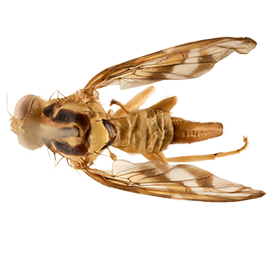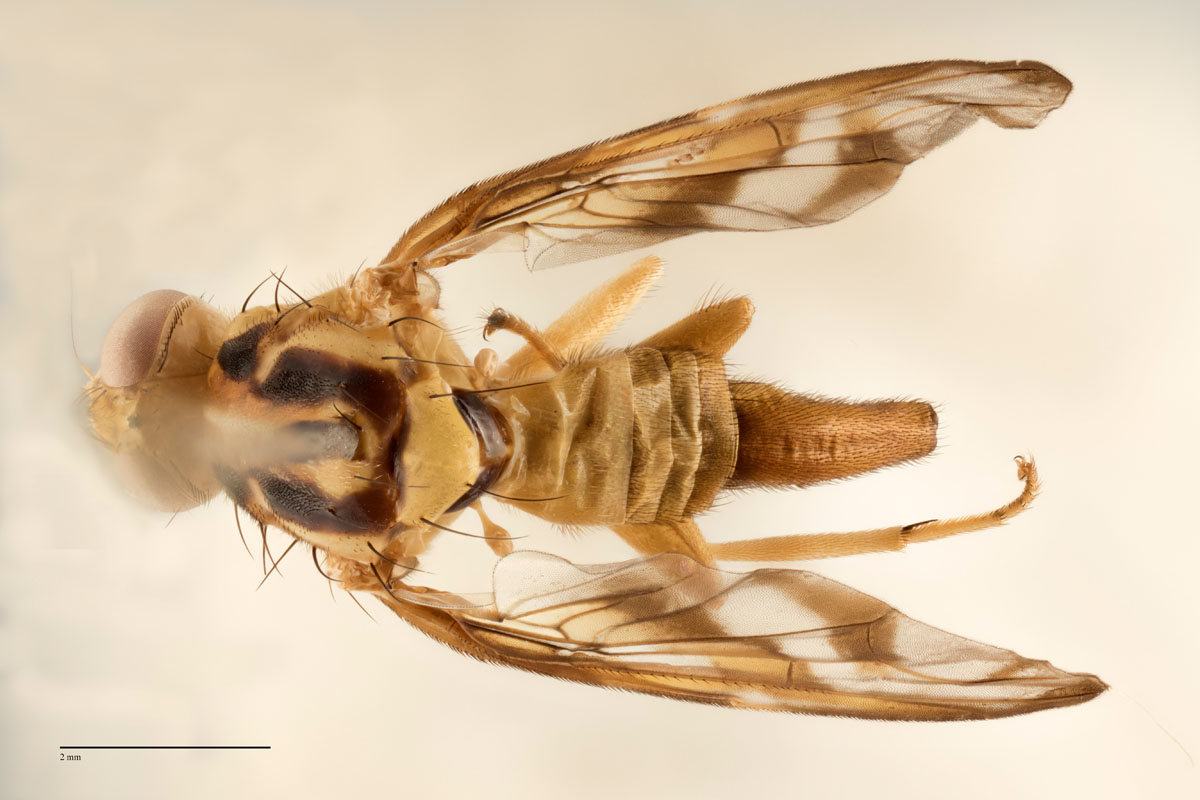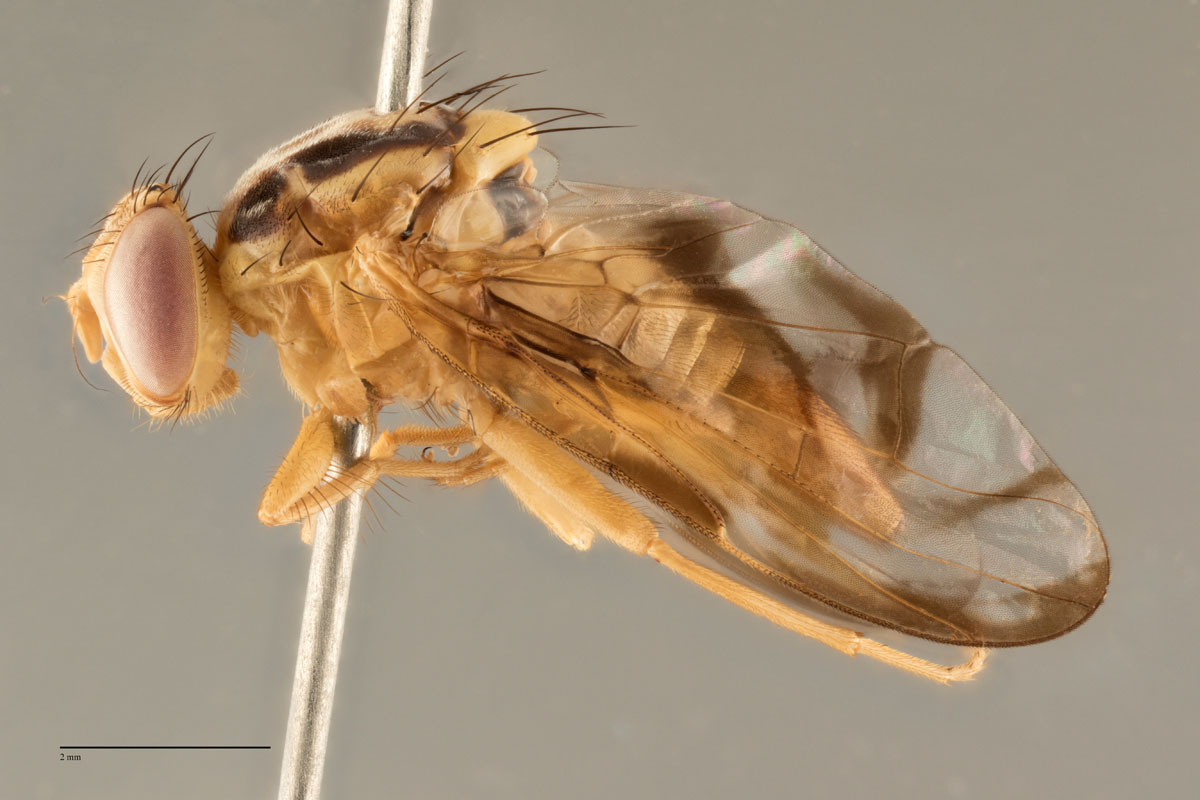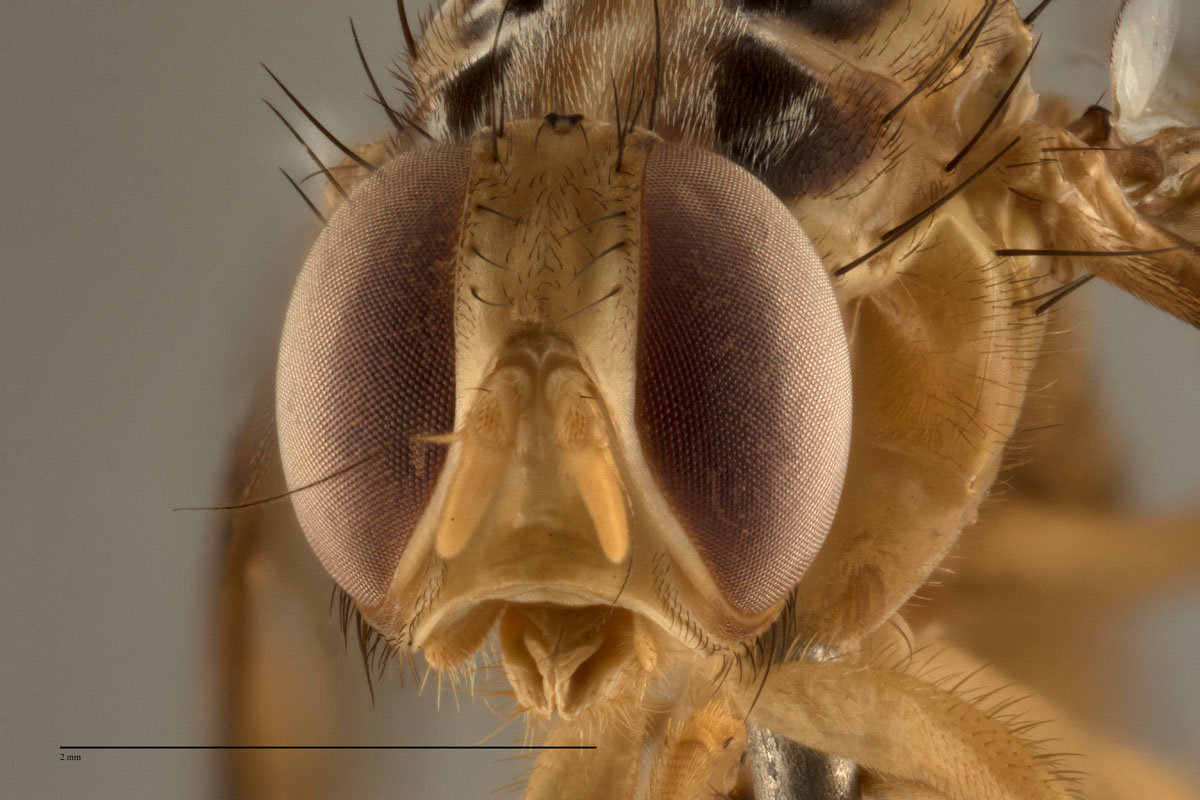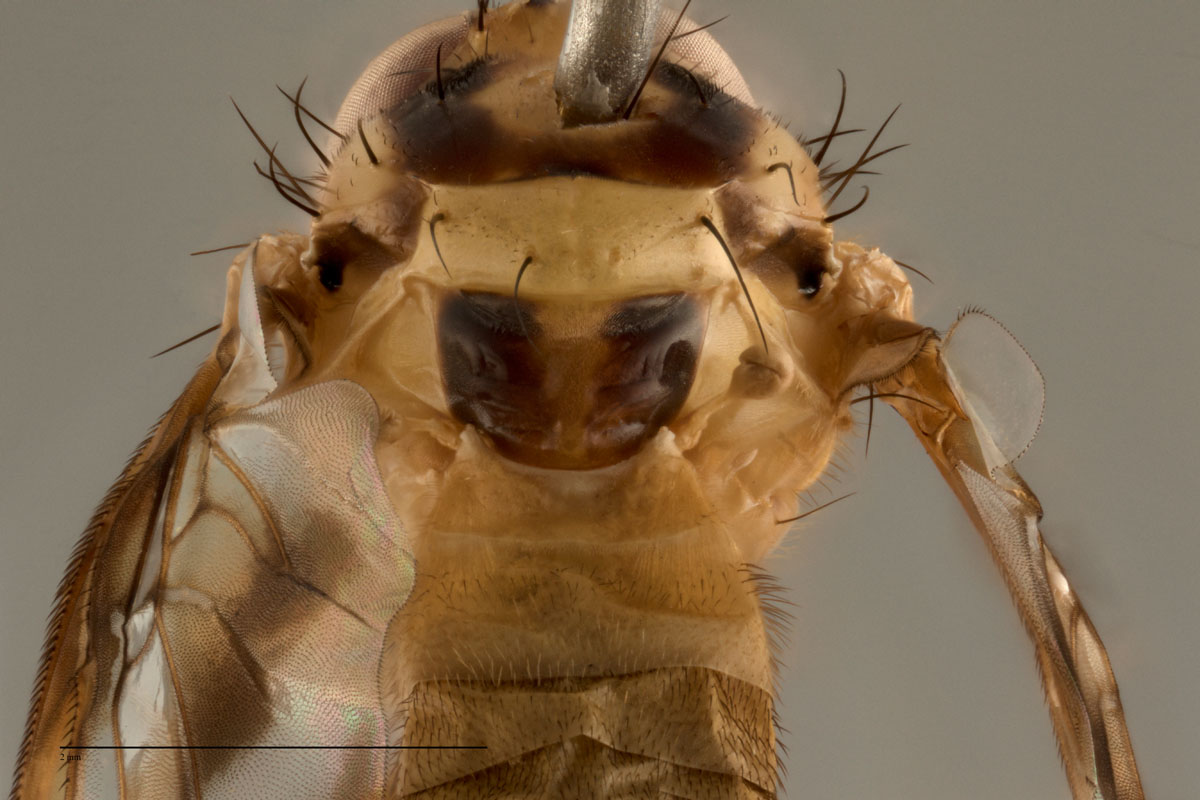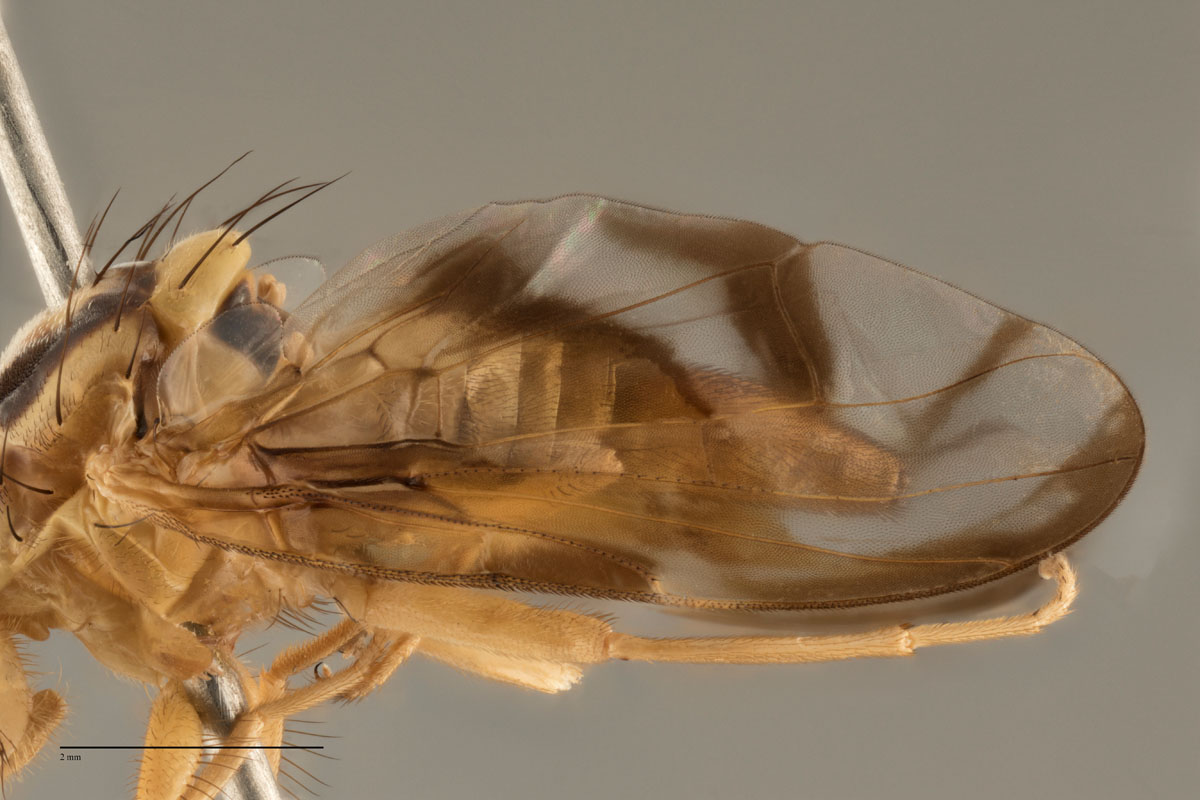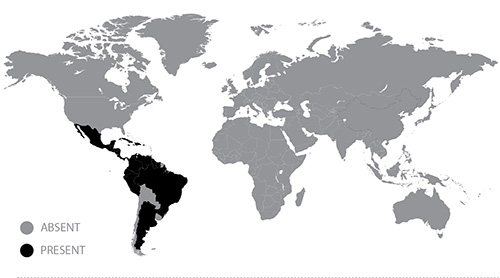Diagnosis
Morphological – adult
This species belongs to the striata-group (note that some publications place this species in the serpentina-group).
Features include:
- frons without brown markings except ocellar tubercle
- scutum with distinct dark patterns, posteriorly with brown or orange brown band or other transverse marking or larger posteromedial mark, with large U-shaped mark including posterior band and vittae
- scutellum entirely yellow or with dark markings only on extreme base of disk
- subscutellum yellow to red brown medially, dark brown laterally
- wing with typical Anastrepha pattern (S-band complete or at most interrupted at crossvein r-m, C-band and at least proximal arm of V-band present), C-band and S-band connected or separated, V-band proximal arm as dark as apical half of S-band and not connected anteriorly to S-band, V-band distal band usually complete, but can be incomplete or absent
- abdominal tergites without brown markings
- aculeus length 1.95 – 2.3 mm; aculeus tip length 0.22 – 0.33 mm; aculeus tip width 0.17 – 0.2 mm
- lateral aculeus margins not curved dorsally, serrated part 0 – 0.2 times length of tip
- aculeus tip is distinctly broad and wedge-shaped with a very blunt apex and extremely fine lateral serrations.
Morphological – larvae
Information not available.
Molecular
DNA barcoding
Diagnostic BOLD reference data available.
PCR-RFLP Test 1
BsrI: Data not available
HinfI: Data not available
HhaI: Data not available
Sau3AI: Data not available
SnaBI: Data not available
SspI: Data not available
Vspl: Data not available
PCR-RFLP Test 2
RsaI is diagnostic, but additional restriction enzymes are needed for a robust identification
RsaI: 480-450, (370-360) x2, 290
